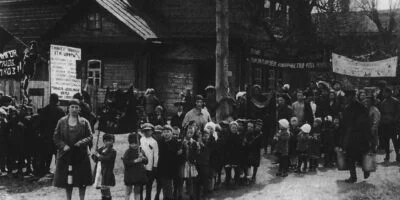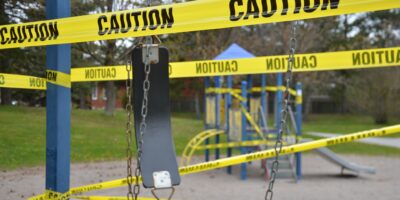Through the Pinhole, Clearly

After I rained on the John Snow parade last week, a British doctor with a musical name contacted me to explain why the Great Barrington Declaration is “wrong” and the John Snow thing is “right.” During our brief exchange, it occurred to me that the following Biblical verse quoted was the wrong metaphor for Lockdown Deniers (people who deny the importance of the severely negative socioeconomic effects of shutting down human intercourse, even for a putatively good cause).
For now I see through a glass, darkly — 1 Corinthians 13 KJV
The problem isn’t that healthcare professionals and sundry medical scientists see the entire world unclearly, or that they sense only part of the proverbial elephant in the room, it is that they see the world very clearly indeed, but only through their own little pinhole view of it.
HCPs and medical scientists are all highly schooled and articulate individuals who know what they know. But they seem unaware that there are things — many, many, many things as it turns out — that are important to the formulation of public policy of which they know naught. That is because most were trained rather than educated. They learned, essentially by rote, that X, Y, Z indications mean A, B, C treatments. Most are little more than articulate but flawed algorithms, programmed, as it were, by their medical trainers.
Obviously, exceptions exist. Nobody is Dr. Gregory House, just like nobody is Raylan Givens or our other screen heroes, but some medical folks — especially older ones, perhaps due to experience and a more classical liberation education — understand their role. Their job is to treat patients or to research pathogenic paths, not to dictate policies of existential import. Their training has given each doctor, nurse, epidemiologist and other HCP a clear view of their pinhole worlds, but not of the Big Picture.
And I do mean of existential import. I make no claim of understanding das Ding an sich or even the Entire Picture, but like other political economists I peer through many more pinholes than narrowly trained specialists do. I see a lot of ugliness that makes complaining about not having enough PPE, or ventilators (remember those?), or ICU beds puny problems by comparison.
We have already seen covid lockdown riots and mostly peaceful protests, putatively about police killings, that would not have occurred on such a scale were most people still dutifully employed. Much worse could be in offing. I cannot tell the future but the reasons I noted in mid-March that “Revolution Is In the Air” persist and even wax. Most important, perhaps, are the lessons of the Cholera Revolts (see Samuel Kline Cohen, Jr., “Cholera Revolts: A Class Struggle We May Not Like,” Social History 42, 2 [2017], 162-80).
In 1831-32, European and American cities erupted into similar patterns of violence simultaneously, without so much as the aid of telegraph messages much less a digital Internet. It appears many poor people simultaneously developed the impression that government officials and healthcare professionals had teamed up to cull them. Although the cull hypothesis spread locally, within Scotland for example, by word of mouth and letter, researchers have found no evidence of international communication of the conspiracy theory. It simply became “obvious” to millions almost at the same time that government leaders were either daft or deadly. The latter was easier for most to believe.
This was, after all, still a Malthusian age, where “excess” people were supposed to be culled by famine, war, and/or pestilence. With the Pax Britannica strong and international grain markets, when allowed to function, even stronger, death-by-disease appeared the only safety valve available to elites. To protect themselves, people reasoned, elites needed to target the poor with a malady that could not infect the rich and powerful. Cholera was perfect because outbreaks of it were novel and “the” scientists seemingly could not agree on its cause or transmission mechanisms while suppressing claims by William White, John Snow, James Gillkrest, and others that it was not easily spread person-to-person and must have come from ingestion rather than inhalation.
In addition, public health authorities pressed the “necessity” of quarantines and cordons even though there was no evidence that they worked to stop cholera but plenty of evidence that, limited though they were by today’s standards, they killed people too. As Gillkrest put it in 1831, “quarantine regulations are, as far as regards this disease, not merely useless, but highly injurious to the community.”
The brutal response to cholera riots merely reinforced the view that governments sought to kill rather than to save. In Russia and other places in Eastern Europe, soldiers shot protestors or stabbed them from their war steeds. Britain’s response was less violent, which may be why it experienced at least 72 cholera riots between late 1831 and early 1833. The military turned out at only four of those and only once did a magistrate threaten to read the Riot Act to protestors. (Our colloquial expression “to read the riot act” to someone comes from the practice of putatively representative Anglo-American governments reminding rioters that the government can, and will, kill them if need be to protect the state and its functionaries. Public announcement that the act was being put into effect granted officials and those summoned to their aid [members of posses and militias and such] legal immunity for “killing, maiming, or hurting of any such person or persons so unlawfully, riotously and tumultuously assembled.”)
And, yes, they were definitely cholera riots because the participants, who numbered in the hundreds, thousands, and even tens of thousands, attacked hospitals, threatened doctors, destroyed hearses, and even seized and occupied parts of cities for days on end. Specialized historians, peering through their own pinholes, assign specific political causes to the riots in each country or region. One, for example, claims that cholera and the riots associated with it were highly politicized as both the Left and Right struggled to control yet another new French government.
But the main cause appears to have been economic. As Cohen notes (p. 165), the sanitary measures established in Paris “threatened the livelihoods of certain professions,” including rubbish collectors, chiffoniers (rag and bone collectors), “and vendors of water, fruit, and vegetables.” Others, fearful their livelihoods could also be snatched away, joined the fight, killing at least one HCP while kidnapping others as garbage wagons burned. Many people entered hospitals alive but few left in that condition, members of the mob noted. Given the Malthusian context, it seemed clear that doctors were killing their patients. They certainly were not saving them and the new regulations proved useless, so what else could the poor do?
Britain was particularly hard hit by cholera rioting because in 1828, in a widely known case, Dr. Robert Knox had paid two men to kill poor people to supply his Edinburgh anatomy lab. Similar cases involving salted Irish corpses bound for Liverpool raised the spectre of a mass trade in this macabre “commodity.” In such a context, it was easy to believe that government officials and doctors colluded to kill off the poor, the swelling numbers of which threatened both the wealth and physical safety of elites.
Finally, the disruption of customary burial practices — regulations that also proved ineffective but difficult to roll back — sparked many of the riots. Not only were officials killing poor people, they were condemning their souls to hell in the name of “public health.”
I hope at least some of that sounds familiar to you; it all sounds eerily familiar to me, all the way down to progressives like Karl Marx and his sidekick Engels barely mentioning cholera, even in private correspondence, even though Marx lived just 100 yards from the infamous water pump that Snow identified. Even after the feces-to-mouth transmission mechanism became accepted science, the dastardly duo continued to blame cholera on poor housing conditions instead.
So why have we not heard crowds chant “Kill the doctors, nae Board o’ Health” as they did in Edinburgh in the early 1830s?
My working hypothesis is that poor people in the eighteenth century were too little schooled to have been “educated” in the notion that doctors and medical scientists are infallible. They understood, as all people not brainwashed by a decade plus of government schools do, that the main insight of Public Choice applies to HCPs as well as government officials (and college professors and everybody else). In other words, they knew that it was possible that they were being deliberately killed by a medico-government phalanx and saw no evidence to the contrary as people continued to die of cholera, ineffective treatment regimens, and unnecessary public health regulations.
Today, people peer through their own pinholes and see teachers telling them that “doctors want to help you, and will but only when we get socialized medicine like in Canada” when, in fact, all HCPs want is their money. If you don’t believe me, go see a doctor and if s/he doesn’t help you don’t pay the bill and see what happens. Ask why they do not follow the Hippocratic Oath. Ask them if they think it is a good idea to have the same entity that pays a life annuity to practically monopolize the medical insurance of the aged and poor. Expose their pinhole view of the world to themselves.
Of course it is a good thing that rioters do not attack HCPs because the real problem is government lockdowns, not doctors, many of whom are beginning to see the truth even through their pinholes. Cohen notes, tellingly, that cholera riots abated whenever governments substituted “charitable assistance and negotiation for harsh regulation and repression” (p. 179). He finishes his article by noting that the Ebola riots in western Africa could have been avoided if “authorities had been aware of Europe’s long past with certain socially violent epidemics” (p. 179). Imagine that, history matters!










